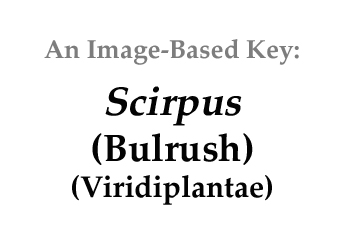|
Home / Anomalous_Items / Aquatic_Macrophytes / Emergent_Leaves / Scirpus |
||||
 |
|
 |
||
|
|
||||
|
Click on images for larger format |
||||
Name derivation: |
||||
|
|
||||
Classification: |
||||
|
||||
|
||||
|
Rhizomatous. Upright stems are trigonous (triangular cross section). Rhizomes can respire anaerobically and produce alcohol when O2 concentration is <3% saturation Laing 1941). Flowers are small and inconspicuous, complete (bisexual), and born on multi-flowered spikelets subtended by several leaf-like sheathed bracts (Cook 1974). Flowers closely resemble terrestrial ancestors in the genus (Gilly 1943). Fruits are achenes modified to be buoyant with large intercellular spaceds in the pericarpand disperse via water currents (Sculthorpe 1967). Fruits are an important food source for waterfowl (Ibid.).
|
||||
Similar genera: |
||||
|
|
||||
Habitat: |
||||
|
Some species are a problem as weeds, e.g. S. juncoides in rice paddies in Madagascar, Malaysia dnd the Philippines (Ibid.).
|
||||
References: |
||||
|
Gilly C.L. 1946. The Cyperaceae of Iowa. Iowa State College Journal of Science 21:55-151.000000 Laing, H.E. 1941. Effect of concentration of oxygen and pressure of water upon growth of rhizomes of semi-submerged water plant. Botanical Gazette 102:712-724. Sculthorpe, C.D. 1967. The biology of aquatic vascular plants. Edward Arnold (Publishers) Ltd. London. |
||||


